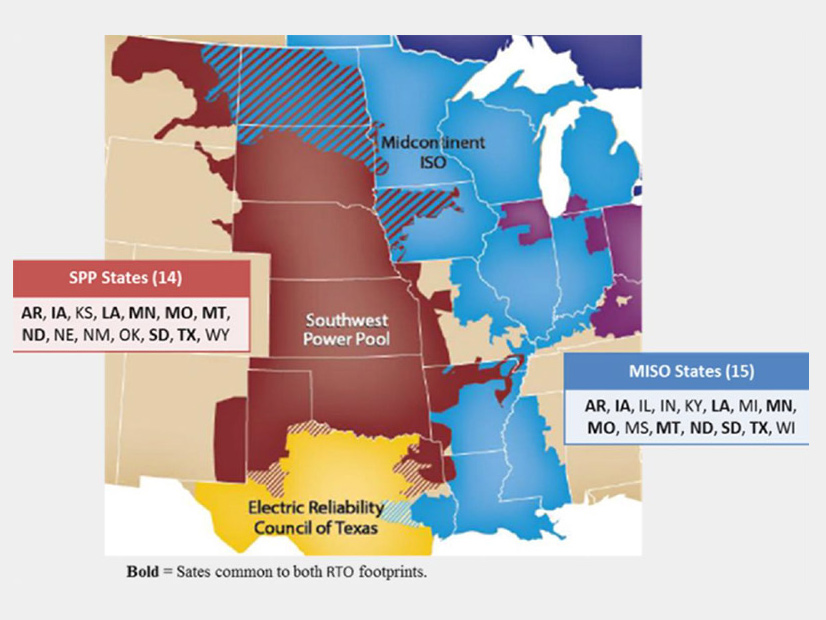MISO and SPP have shared an early concept for cost allocation on joint transmission projects intended to ease their crowded interconnection queues.
The grid operators envision a four-stage process to split costs, including reliability and benefits analyses, project review and approval, and a study on what individual interconnection customers would owe for projects.
MISO and SPP surprised stakeholders last month by seeking stakeholders’ ideas on how to split costs on joint targeted interconnection queue projects instead of proposing their own allocation method. (See MISO, SPP Solicit Ideas on Allocating Joint Tx Costs.)
In late June, the RTOs introduced two expensive cluster projects that stand to eliminate most flowgate congestion. The $424 million and $728 million options traverse South Dakota, Minnesota and Missouri. (See MISO, SPP Name Projects to Help Queue Troubles.)
“I want to stress to everyone that we’re in the initial stages of setting a cost allocation for this effort,” SPP’s Neil Robertson told stakeholders during a virtual meeting Friday.
SPP Director of Seams and Tariff Services David Kelley said the RTOs are striving for an allocation method “flexible enough for future applications” between the two.
“We want to design something that can be applied to various situations in the future when pertinent,” Robertson said.
But Kelley said if it’s too difficult to create a multiuse allocation, MISO and SPP will settle for single-use.
MISO and SPP said the lion’s share of project costs will be divided between load and generator interconnection customers. But while the grid operators have a quantifiable way to assign project costs to load via an adjusted production cost calculation, they’re not yet sure how to nail down quantifiable benefits to interconnection customers.
“We need to keep this simple, in an approach to a cost allocation, where possible,” Robertson said.
Missouri Public Service Commission economist Adam McKinnie asked if the RTOs have any idea of how to estimate interconnection customers’ benefits.
“You asked the marquee question,” Robertson said. He added he’s been asking interconnection customers if there’s a broader way to socialize costs of new transmission among them beyond clustering the customers that require the same transmission upgrade.
He said MISO and SPP want to “assess a fair fee” to interconnection customers but that it would be a “very significant technical process” to crunch an individual customers’ unique costs. Robertson said the RTOs will probably calculate an aggregate benefit for a class of interconnection customers and may assess individual customers a per-megawatt fee based on their impact factor on the transmission project.
Robertson said stakeholders will also have to discuss how the targeted interconnection projects will receive initial funding.
The RTOs said they’ll have a more detailed proposal in the coming months.



